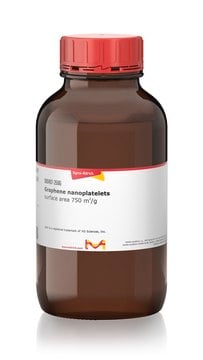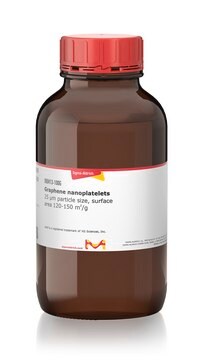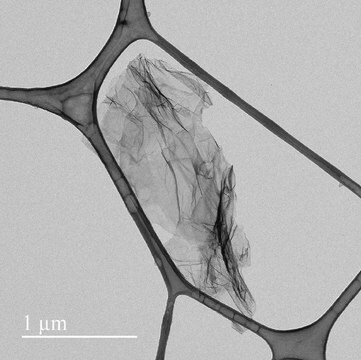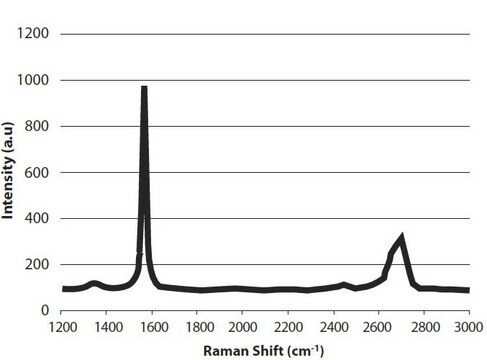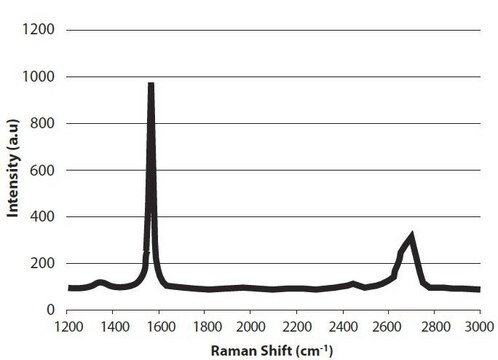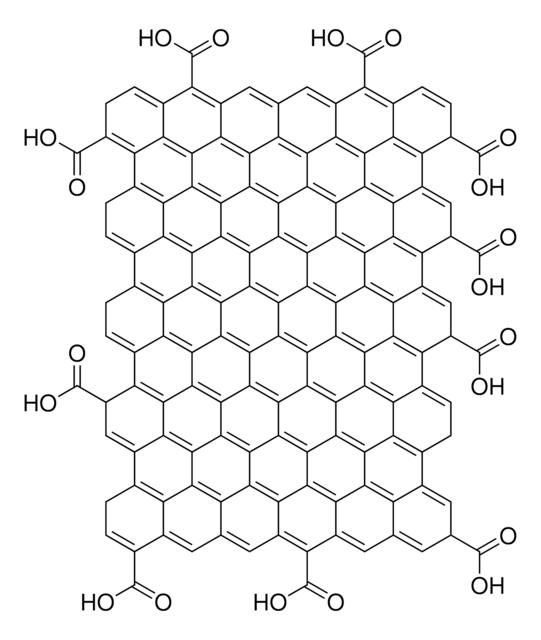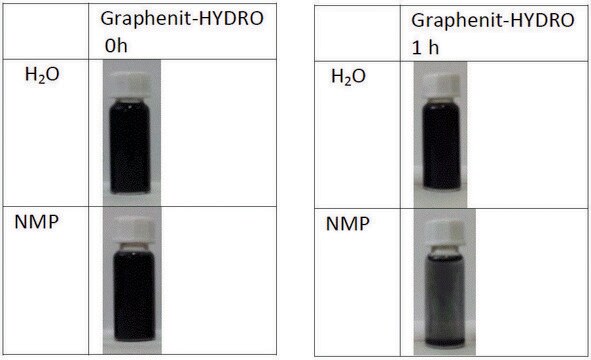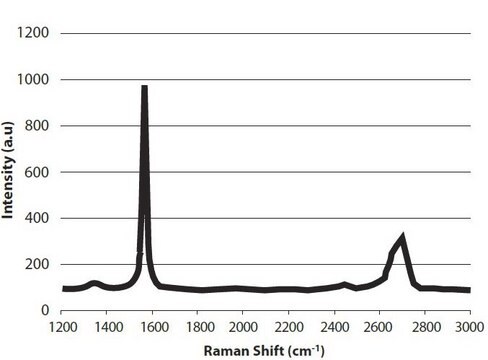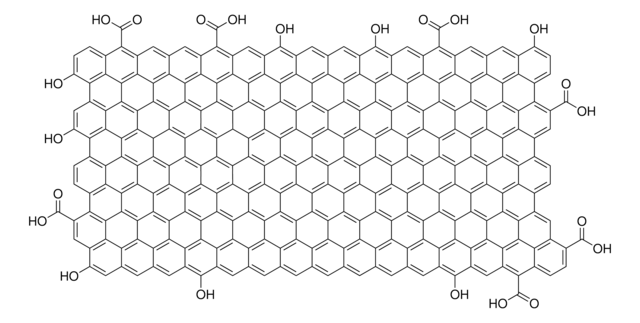900439
Graphene nanoplatelets
<2 μm particle size
Synonim(y):
GNPs, xGnP® graphene nanoplatelets-grade C-500
Zaloguj sięWyświetlanie cen organizacyjnych i kontraktowych
About This Item
Polecane produkty
opis
Appearance: Black powder
relative gravity: 2.0-2.25 g/cm3
Poziom jakości
Postać
powder
powierzchnia
500 m2/g
grubość
a few nm
wielkość cząstki
<2 μm
gęstość nasypowa
0.2‑0.4 g/cm3
InChI
1S/C
Klucz InChI
OKTJSMMVPCPJKN-UHFFFAOYSA-N
Szukasz podobnych produktów? Odwiedź Przewodnik dotyczący porównywania produktów
Powiązane kategorie
Opis ogólny
- xGnP® graphene nanoplatelets are unique nanoparticles consisting of short stacks of graphene sheets having a platelet shape.
- The unique size and platelet morphology of xGnP® graphene nanoplatelets makes these particles especially effective at providing barrier properties, while their pure graphitic composition makes them excellent electrical and thermal conductors. xGnP® graphene nanoplatelets can improve mechanical properties such as stiffness, strength, and surface hardness of the matrix material.
- xGnP® graphene nanoplatelets are compatible with almost all polymers, and can be an active ingredient in inks or coatings as well as an excellent additive to plastics of all types. The unique manufacturing processes are non-oxidizing, so material has a pristine graphitic surface of sp2 carbon molecules that makes it especially suitable for applications requiring high electrical or thermal conductivity.
- Grade C particles typically consist of aggregates of submicron platelets that have a particle diameter of less than 2 microns and a typical particle thickness of a few nanometers, depending on the surface area. In general, grade C shows very high surface area and macro-porosity. Grade C particles are available in different grades with average surface areas of 300, 500 and 750 m2/g.
Zastosowanie
- Ultracapacitor electrodes.
- Anode materials for lithium-ion batteries.
- Conductive additive for battery electrodes.
- Electrically conductive inks.
- Thermally conductive films and coatings.
- Additive for lightweight composites.
- Films or coatings for EMI shielding.
- Substrate for chemical and biochemical sensors.
- Barrier material for packaging.
- Additive for super-strong concrete.
- Additive for metal-matrix composites.
Inne uwagi
Graphene nanoplatelets have naturally occurring functional groups like ethers, carboxyls, or hydroxyls that can react with atmospheric humidity to form acids or other compounds. These functional groups are present on the edges of the particles and their wt% varies with particle size.
Informacje prawne
xGnP is a registered trademark of XG Sciences, Inc.
Ta strona może zawierać tekst przetłumaczony maszynowo.
Kod klasy składowania
11 - Combustible Solids
Klasa zagrożenia wodnego (WGK)
WGK 1
Temperatura zapłonu (°F)
Not applicable
Temperatura zapłonu (°C)
Not applicable
Wybierz jedną z najnowszych wersji:
Masz już ten produkt?
Dokumenty związane z niedawno zakupionymi produktami zostały zamieszczone w Bibliotece dokumentów.
Mechanical properties of graphene nanoplatelet/epoxy composites.
King JA, et al.
Journal of Composite Materials, 49(6), 659-668 (2015)
Performance dependence of thermosyphon on the functionalization approaches: An experimental study on thermo-physical properties of graphene nanoplatelet-based water nanofluids.
Amiri A, et al.
Energy Conversion and Management, 92, 322-330 (2015)
Produkty
Recent Advances in Scalable Synthesis and Processing of Two-Dimensional Materials
Nasz zespół naukowców ma doświadczenie we wszystkich obszarach badań, w tym w naukach przyrodniczych, materiałoznawstwie, syntezie chemicznej, chromatografii, analityce i wielu innych dziedzinach.
Skontaktuj się z zespołem ds. pomocy technicznej